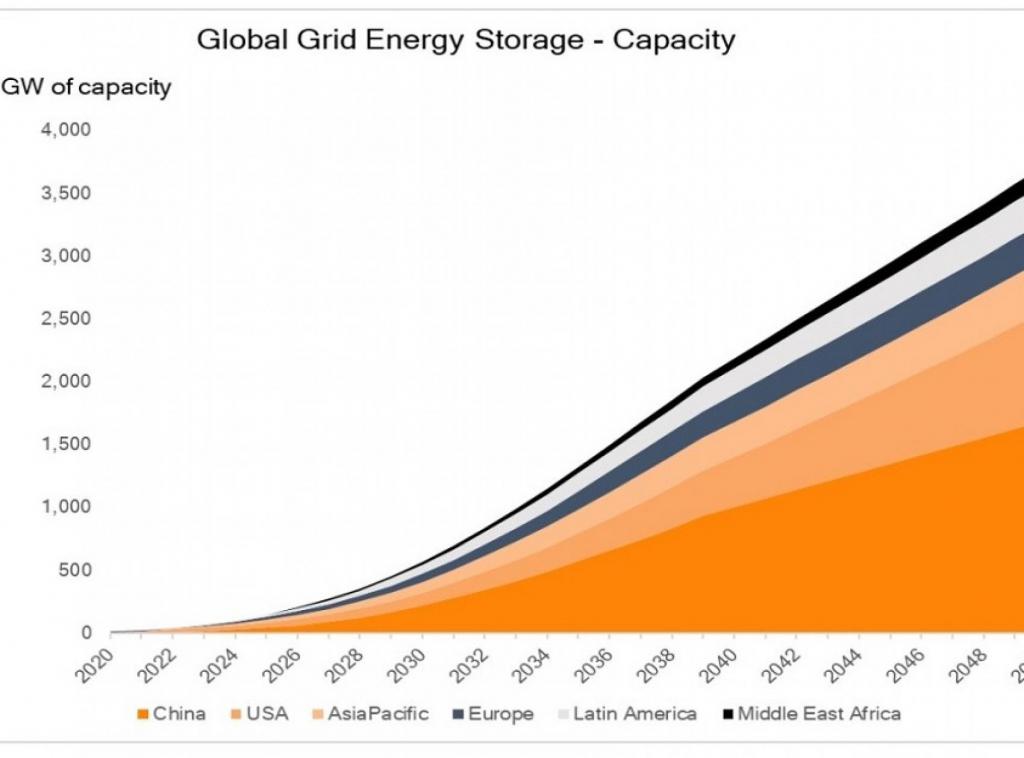The capacity of energy storage systems will exceed 3 700 GW in 2050.

The total capacity of short-term energy storage systems (up to 4 hours, including domestic installations) was 22 GW and the capacity was 67 GWh. In 2050, capacity will increase to 3 715 GW and capacity to 12 147 GWh. This is according to a new analysis by Rethink Energy, "Energy Market Forecast to 2050". In its development, the company puts forward the thesis that during the mentioned period it is no longer only about lithium-ion batteries, but also about chemical and mechanical ones.
In 2031, the capacity of energy storage systems in the world could reach 2 327 GWh and the installed capacity 690 GW. Although lithium-ion batteries will account for a large part of this capacity, Rethink estimates that in 2030 some 29.5% will be alternative types to energy storage systems. This will serve as a springboard for the development of longer-term storage systems, where the lithium-ion way is unlikely to dominate. In other words, the share of lithium-ion batteries, which today account for about 95% of all new battery-based energy storage projects, will drop significantly in 2030.
Among installed grid systems, lithium-ion batteries will account for just over 69%, alternative chemistry just under 25% and finally, 4.5% will be accounted for by mechanical systems - gravity, pneumatic and others, according to Rethink Energy.
"We believe the NMC and NCA lithium-ion batteries clearly demonstrate the high energy-to-mass density required for the electric vehicle market," says Peter White, the company's battery and storage systems analyst. Gradually, however, these two battery types will start to lose out, giving way to LFP - lithium iron phosphate batteries.
In the period to 2027, the US market in particular will have very few "lithium-ion resources" and this will make them very expensive, which in turn gives alternative chemical batteries a short five-year boom period.
The report's authors believe that any alternative battery company that manages to supply more than 1 GW of batteries per year and then double that supply at least once, and preferably at least twice, by 2027 will be able to secure a low enough cost of production to " protect its lithium-ion battery business over the long term."
Battery capacity using the "alternative chemistry" will grow from 1,331 MWh installed today to 155,778 MWh by 2030, Rethink estimates.
Earlier, WoodMackenzie predicted that by the end of 2031, the total installed capacity of energy storage systems in the world will reach 500 GW. The US will remain the largest market with a total energy storage capacity of 600 GWh, followed by China with 422 GWh, and Europe will lag significantly behind, to just 159 GWh.
